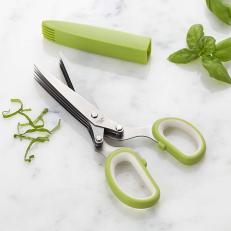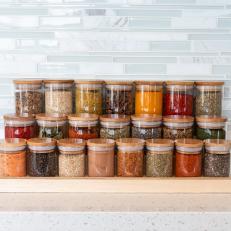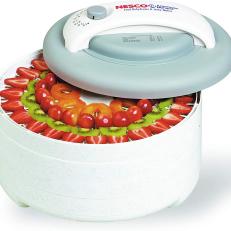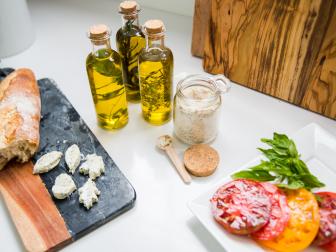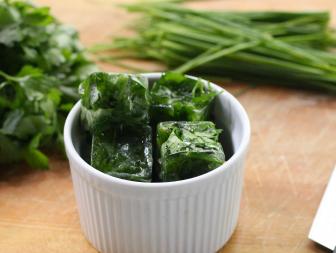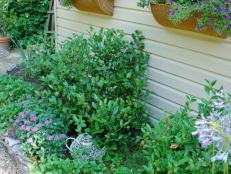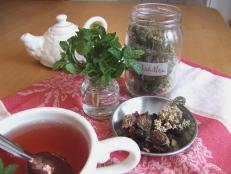4 Ways to Dry Fresh Herbs
Savor the flavor of your fresh garden herbs by dehydrating them in the oven, air fryer or dehydrator, or simply air-drying them in a paper bag.

If your herb plants are producing too quickly for you to keep up with the fresh harvest, dry them so you can enjoy their flavor year-round. Air-drying herbs in a paper bag is easy and inexpensive, but you can also dry herbs in a food dehydrator, in the oven or in an air fryer.
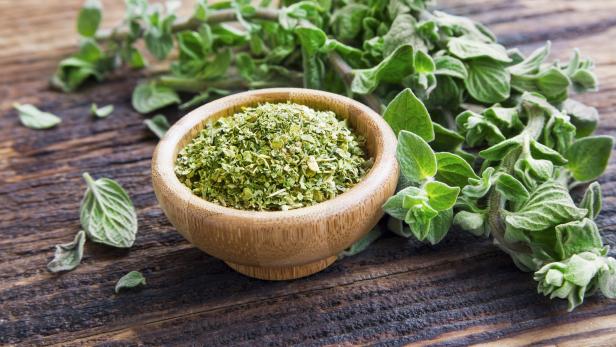
catalina.m
Oregano is easy to dry and it is often tastier when dried.
How to Dry Garden Herbs
Decide on a Method
Air-drying works best for low-moisture herbs like marjoram, oregano, rosemary and dill. Herbs like basil, chives and mint contain more moisture and it's best to dry them in a dehydrator, air fryer or oven.
How and When to Harvest Herbs
An herb's flavor is most pronounced just before the plant begins to flower. You can prolong the harvest by snipping off the flower buds whenever they appear. The essential oils are concentrated in the leaves in the early morning before the sun causes them to be released into the air. Early morning is, therefore, the best time to harvest herbs. Cut healthy herbs, removing any sickly, dried or wilted leaves, and brush away insects. Snip individual leaves or cut an entire shoot just above a leaf node; this will encourage dormant buds to grow at the nodes for a bushier plant.
How to Grind Spices After Drying
After drying your herbs, you can store them whole, crumble them into smaller pieces or grind them into a fine powder. Use a mortar and pestle, a rolling pin, herb scissors or a rotary grinder (like a pepper mill) for rougher, bigger pieces. To achieve a finer texture, try a food processor, or a spice or coffee grinder.
How to Store Dried Herbs
Oxygen and sunlight will cause dried herbs to deteriorate quickly. So, store them in airtight containers. If using clear glass or plastic containers, keep your dried herbs out of the sun or direct light.
Make Herb Blends
Get creative and make your own personalized seasonings. Herbs that you grow together in the garden can also be dried together and made into your favorite seasonings. Here are a few popular garden herb combos.
- Italian cooking: basil, oregano, rosemary and marjoram
- Traditional bouquet garni: parsley, bay laurel and thyme
- Poultry seasonings: sage, thyme, parsley and rosemary
- Mediterranean cuisine: chervil, tarragon and parsley
- Ranch dressing and dips: parsley, dill and chives
Harvest + Preserve Seeds Too
Harvest the seeds of dill, fennel and coriander when the flower heads have faded and started to dry. Clip the flower heads and place them in paper bags, then shake the heads to dislodge the seeds. Store seeds in an airtight container.
4 Ways to Dry Herbs
1. Air-Dry Herbs in a Paper Bag
- Wash the herbs and then pat them dry with a dishcloth.
- Gather several branches or sprigs together and tie them with string or a rubber band. The smaller the bundle, the easier and faster they will dry.
- Put the bundle of herbs, stem-side up, in a paper bag. Tie the end of the bag closed, being sure not to crush the herbs as you do, and poke a few holes in the bag for ventilation.
- Hang the bag by the stem end in a warm, well-ventilated room.
- Your herbs may be dried and ready to store in as little as one week.
2. Oven-Dry Herbs
- Wash the herbs and then pat them dry with a dishcloth.
- Lay the herb leaves or sprigs on a cookie sheet lined with parchment paper. Place the cookie sheet in an open oven on low heat — less than 180 degrees F — for two to four hours.
- To see if the herbs are ready, check if the leaves crumble easily. When they get to your desired crispiness, allow them to completely cool. Grind the dried herbs and then place them in airtight jars.
- Note that oven-dried herbs will cook a little, which removes some of the potency and flavor, so you may need to use a little more of them than you would fresh herbs.
3. Dry Herbs in an Air Fryer
- Wash the herbs and then pat them dry with a dishcloth.
- Herbs need to be weighed down inside the air fryer. Delicate, lightweight leaves and sprigs will likely get blown around inside the air fryer once the fan starts going. This can cause the herbs to burn and even worse, they can caught inside the fan and ruin your air fryer. If your air fryer has a top grate or rack, lay that on top of the herbs. If not, weigh the herbs down by tying them in a bundle with some heavy twine or laying an all-metal utensil over the herbs.
- Cooking time and temperature will vary depending on your machine, the size of the herbs and the type of herb. Those with thicker stems and leaves, like sage or rosemary are going to take longer than oregano, basil or thyme. Start at around 325 degrees F for 3 to 5 minutes, and check the progress every 30 to 60 seconds.
- When the herbs are done cooking (at your desired crispiness) allow them to cool to room temperature, then place them in airtight jars.
Before
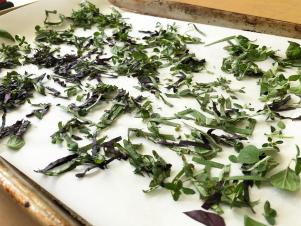
After

4. Dry Herbs in a Dehydrator
A dehydrator is a must for a lot of home gardeners. It is a great tool for making sun-dried tomatoes, drying fruits like strawberries, blueberries and apples, as well as dehydrating citruses like oranges, lemons and limes for potpourri or decoration.
- Preheat the dehydrator to the lowest temperature setting. On most machines, it is about 95 degrees F.
- Wash the herbs and then pat them dry with a dishcloth.
- Depending on the herb, you can choose to remove the leaves from the stem before dehydrating or after.
- Lay the herbs on the dehydrating racks or, if your machine comes with a mesh screen, you may choose to use that for lighter, more delicate herbs. Lay the herbs out leaving a little bit of space between each sprig or leaf.
- Check the herbs about halfway through your machine’s suggested drying times. Larger herbs with thicker leaves like sage, rosemary, chives and mint can take 9 to 15 hours, while smaller finer herbs such as dill, cilantro, thyme and fennel can dry in 3 to 6 hours.
- When the herbs are at your desired crispiness, allow them to completely cool. Then crumble them up or grind them and place them in airtight jars.
Make Herb Butter, Herb Salt + Herb-Infused Oils
Learn more ways to use fresh herbs in your cooking.
5 Ways to Freeze Fresh Herbs
Learn how to prepare chives, parsley and other herbs for the deep freeze.






